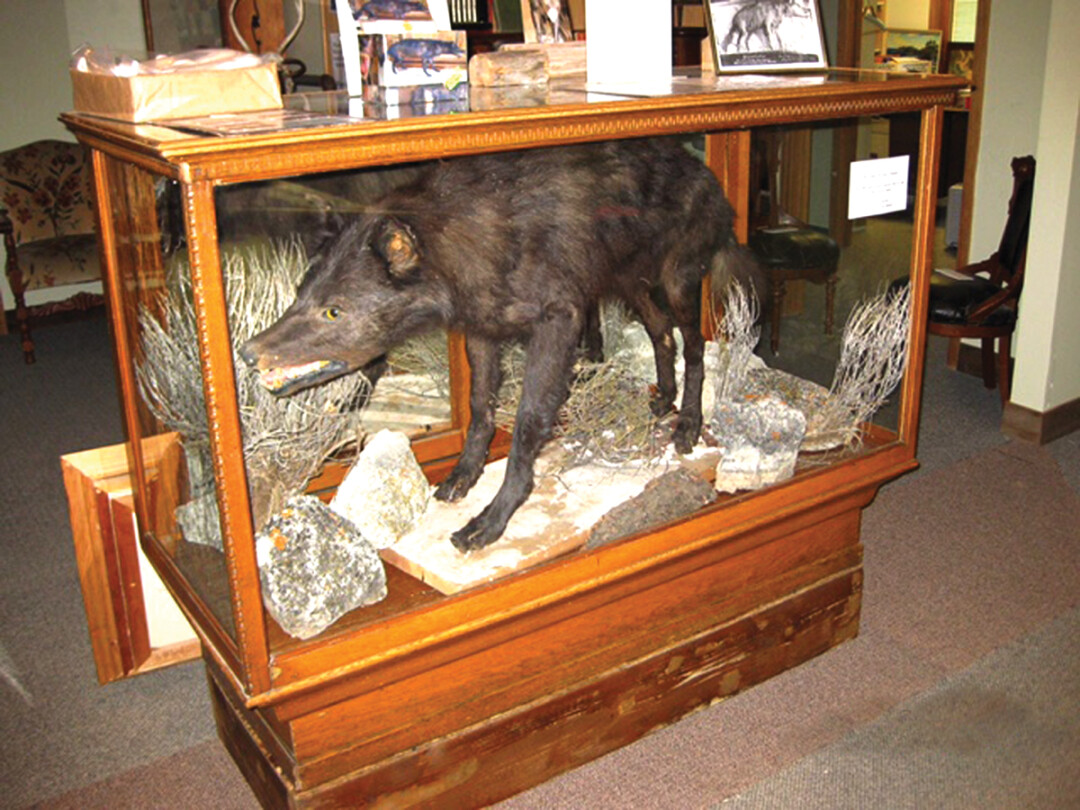Mysteries at the Madison Valley History Museum
This summer, when you’re feeling the urge to head out of town on a nice hot afternoon, maybe drive from Bozeman through Norris and head towards Ennis. On the way you may stop for a waterski jaunt around Ennis Lake, but if you head through Ennis and then towards Virginia City, you’ll come across a hidden jewel of Southwest Montana – the Madison Valley History Museum.
Located just a few miles outside of town off Montana Highway 287 stand three buildings which house a fascinating collection that one just doesn’t see in most museums these days. There is the main building as well as the working Angle forge that visitors may see upon request. The third building is new to the museum for this summer’s season and was built primarily to house a spectacular gun collection that was donated last summer.
One of the museum’s drawing attractions is The Beast, a taxidermied wolf-like creature that I.A. Hutchins, a Mormon settler who lived near what is now called Ennis, shot in 1886 after it became known the animal was harassing and killing his livestock. The sensationalized story surrounding this creature, its killing and preservation in 1886, its storage in a Pocatello museum for many years, and then how it came back to the Madison Valley by way of Jack Kirby - the grandson of Hutchins - in 2007 has sparked interest and the imagination of listeners for generations. In fact, the TravelChannel filmed an episode of Mysteries at the Museum about The Beast in 2012, and according to the surviving family members, the producers of the show asked questions looking for specific answers in the hopes of spinning the tale into more than what it was. Lee Robison, the Madison Valley History Association’s President, theorizes that “the truth [about The Beast] is, a farmer shot an aggressive animal because it was bothering his livestock.” However, the televised and exaggerated depiction of The Beast’s story has brought several people to the museum who otherwise would have driven right past the buildings on the way to Virginia City, not knowing what all the museum offers. One visitor from Seattle confessed that he planned his summer trip to Montana so one of his stops was, of course, Yellowstone National Park, but he also wanted to see The Beast after he had seen the Travel Channel program on its legend. So, why all this fascination?

Well, The Beast doesn’t quite look like a wolf, which is the logical answer to what the creature really is. Stories of a traveling circus passing through the area, and a hyena somehow escaping, have been offered as a reason for why The Beast looks the way it does. Could it be a cross between a wolf and a hyena…and is that even possible? Robison suggests that the animal was a hybrid wolf or a genetic anomaly. At one point, the family agreed to DNA testing, but decided they didn’t want to know the results because it would diminish the legend that surrounds the creature. A curator at the Museum of the Rockies, Michael Fox, upon viewing The Beast in its sealed glass display, remarked that the standard practice of the time would have been to use arsenic and formaldehyde in the taxidermy process, and the fact that the animal has seemed so deformed these 131 years could just be from a bad taxidermy job done in 1886, plus the fact that it hasn’t always been properly managed since then. However, if you look at a photograph of The Beast from shortly after it was taxidermied, the physical characteristics of the animal haven’t changed much over the past century. Whatever your take on what The Beast is or isn’t, it is guaranteed to inspire the imagination.
The magnetic draw for patrons to this museum is fueled by The Beast, but once that curiosity is met, patrons see that there is much more in the museum’s collection worthy of notice. There are themed rooms, such as the Military Room, which contains well-preserved uniforms that Madison Valley-born soldiers wore in various wars going back to WWI. Other rooms are filled with antique kitchen and household items, farm and ranch equipment, medical tools, and children’s toys. The collection ranges from a beautiful 24 ¾ pound Rainbow Trout caught at Cliff Lake in 1925 to a World War II-era Purple Heart Medal to an impressive clothing collection including a well-preserved wedding gown from 1878. Each glass case and themed room is full of Southwest Montana history, rich as the soil of the Madison Valley which brought settlers to farm the area so long ago. Robison says, “There are many small and struggling museums around Montana that offer us glimpses into the past. Without the past, we lose part of who we are.”
Admission to the Madison Valley History Museum is free of charge, and the volunteer staff asks only for a signature in the guest book and a donation if you are feeling generous after you take a self-guided tour. The museum, which is always looking for volunteers, opens June 17th and the hours are Tuesday through Sunday, 1 p.m. to 4 p.m. For more information about the museum, you may contact Lee Robison at rleerobison@icloud.com or (301) 518-9486.

